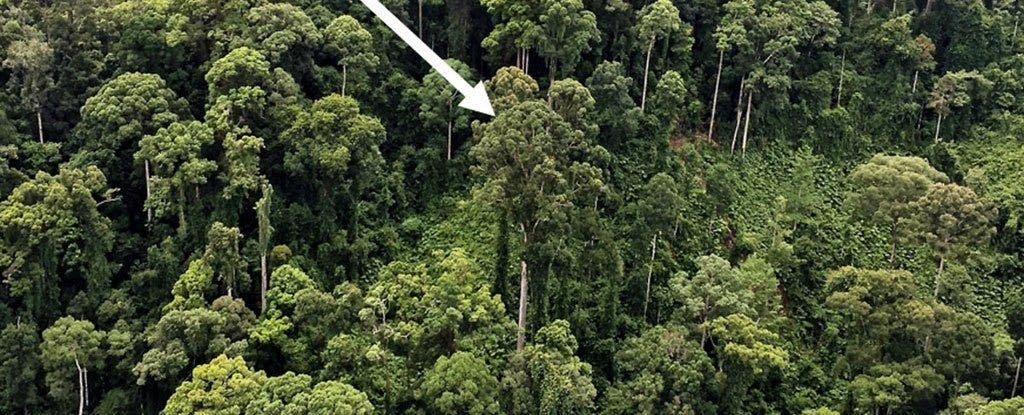
Biologists have located the world’s tallest tropical tree, a 94.1-metre (309-foot) specimen in Borneo. It’s not an isolated case – the tree is surrounded by 49 other mammoths.
“I’ve been doing this for a solid 20 years now, and I have to say, this was one of the most moving experiences in my career,” ecologist Gregory Asner from the Carnegie Institution for Science at Stanford University told Mike Gaworecki at Mongabay.
“This tallest tropical tree, and the 49 runners-up, are truly phenomenal expressions of the power of nature.”
The tree was identified with an aircraft called the Carnegie Airborne Observatory, using LiDAR technology. LIDAR, which stands for Light Detection and Ranging, is a remote sensing method that uses light in the form of a pulsed laser to measure distances and ranges — essentially a light-based radar. It’s accurate enough to be trusted, and researchers are confident in the measured height.
“This technique relies on the 500,000 laser shots per second that we fire out of the bottom of the plane as we fly, which provides a very detailed 3D view of the forest canopy down to the ground level,” Asner told Mongabay. “We then digitally process and comb the 3D data for the tallest trees (in this case).”
But just to be sure, Asner returned to the area in a helicopter after he processed the LIDAR data. He found the tree and its canopy and set up a laser scanner, confirming the results. Still, the tree has only been observed remotely and the team intends to visit the it in the following weeks. Without a doubt, it will be a humbling experience.
“The crazy thing is that our tallest tree is immediately flanked to each side by a tree of the same species of Shorea, almost as tall!” said Asner. “So, there are three trees, like brothers, standing above the rest of the canopy. I almost cried as we circled the tree maybe 10 times before the pilot said we had to go back.”
The results were reported just months after Cambridge researchers made headlines with their discovery of a tropical tree measuring 89.5 metres (293.6 feet), in the same area but in a different valley. The purpose of the research is not just to find the biggest trees but rather to understand these populations and figure out how to protect them from threats – especially logging. Asner believes this finding could provide an unexpected boost to their conservation efforts.
If anything, these huge trees can serve as an inspiration for people, motivating them to preserve these true wonders of nature.
“Conservation needs inspiration, and these sentinels of the Bornean jungle provide that to us,” Asner concluded. “This discovery is a gift to science, to the people of Sabah and Borneo, and to the world.”


